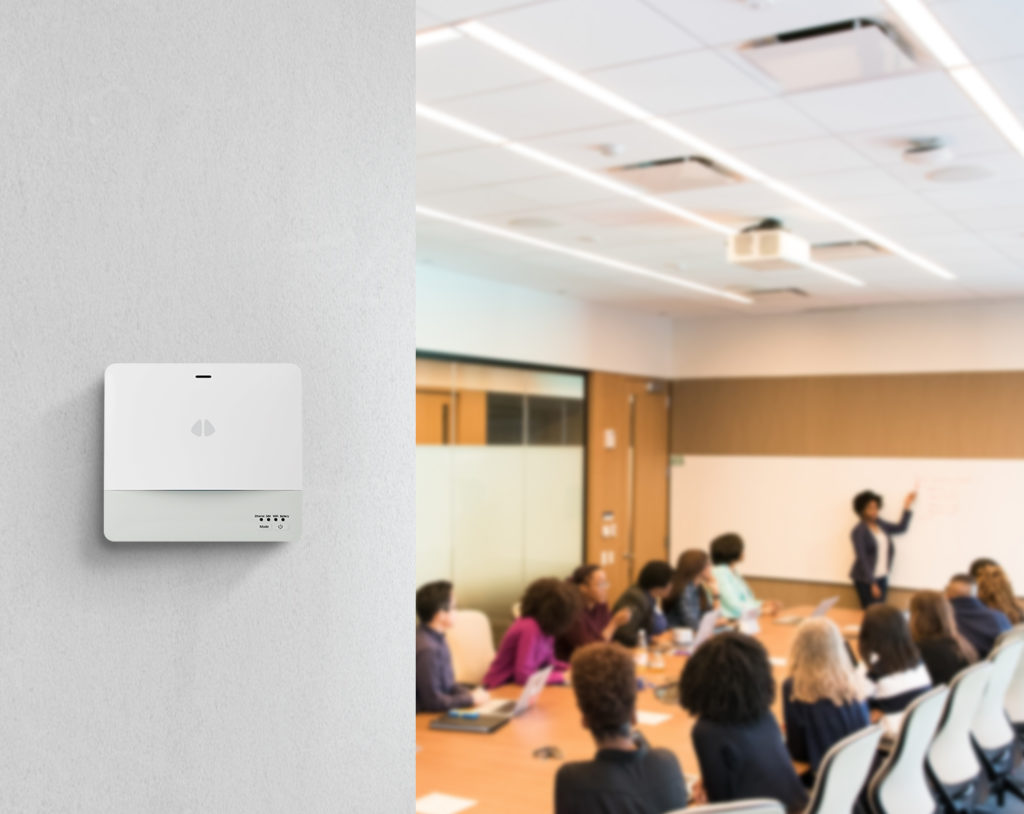
By the beginning of the year 2020, the most lethal health crisis of the 21st century transpired – it claimed millions of lives, caused horrendous suffering, forced businesses to shut down and the economies to collapse.
One sad fact is, it is not yet over.
The coronavirus pandemic or COVID-19 is not the last one. Possibly deadlier and more transmissible strains of the existing virus continue to unfold, newer infectious diseases might come out in a heartbeat.
But despite this, we must strive to survive. Move forward and become stronger and wiser than who we were before all this took hold. But for that to happen, we need to learn from our experience and optimize our systems to keep ourselves and the environment where we operate away from any health and economic threats. Thanks to technology, we can now enhance the way we navigate our built environments, protect occupant health and secure businesses from the potential future unknowns.
Time to think fast and ahead
Social distancing, mandatory mask wearing, and for fortunate employees, working from home have become the new norm. But what can employers, facility managers, and building owners do now that most governments are taking down the restrictions and are expecting most companies to go back to work?
What can we do to be able to cope with the new normal?
Here are some strategies that you might want to consider:
High tech health assessments
Post-pandemic built environments and workplaces must conduct employee and occupant health checks before allowing them to enter the facility. This helps ensure that they do not carry symptoms of any serious and contagious illnesses. Many teams today perform quick health surveys via mobile application before they arrive in the office so they can be checked before arrival.
Go touchless
Viruses including the coronavirus survive in surfaces and places that people frequently touch like doorknobs and computers. Knowing this, many workplaces are encouraged to go touch-free and adopt voice technology. According to a survey conducted by Adobe Voice, 86% of people said that voice technology would make their offices more sanitary and 77% expect to use this technology more frequently in the coming years. There are also movement-activated doors that allow building occupants to enter and exit facilities without the need to touch or press anything.
Occupancy monitoring
In the past few months, many offices and buildings have implemented safety measures to comply with social distancing practices. However, without having access to reliable occupancy data, this protocol may likely become ineffective.
Occupancy monitoring systems allow building managers to spot tenant’s presence in workplaces and other built spaces, real-time. Occupancy monitoring can be performed using an application that checks workers upon their arrival at the office and scans a QR code. There can also be a more complicated yet potentially more accurate method involving sensors that are placed throughout the building. Occupancy sensors can be added to desks and office cubicles to sense if they are occupied.
Occupancy detection sensors show an overview of how effectively a space is being used. It can also drive the fine-tuning of heating, ventilation, air conditioning (HVAC) functions which ensures tenant comfort and energy efficiency at the same time.
Indoor air quality sensors
Indoor air quality or IAQ sensors are devices designed to monitor building indoor air quality. The sensors track the presence and levels of specific air factors such as humidity, temperature, air pressure as well as toxic pollutants like particulate matter, volatile organic compounds, carbon monoxide and more..
By having the capability to monitor a building’s indoor air quality, facility managers can establish strategies and adjust their indoor environment based on their facility’s needs. This helps control air pollution, reduce health problems associated with it, enhance employee work performance, and increase business value.
And since many studies today show that a building’s indoor air quality presents a great influence in the growth and accumulation of viruses such as the coronavirus, continuous monitoring and maintaining good indoor air quality helps reduce its risk of spread and infection.
Future-focused business leaders, property developers, and investors recognize the threat as well as the lessons presented by the COVID-19 pandemic. As a result, they are embracing the opportunity to transform their organizations and invest in technologies that will help them adapt to severe health and economic catastrophes in the future.
How about you?
Most unfortunate events happen in unexpected ways, are you prepared enough?
References:
- Fedtechmagazine.com
- Analyticsinsight.net
- stefanini.com


